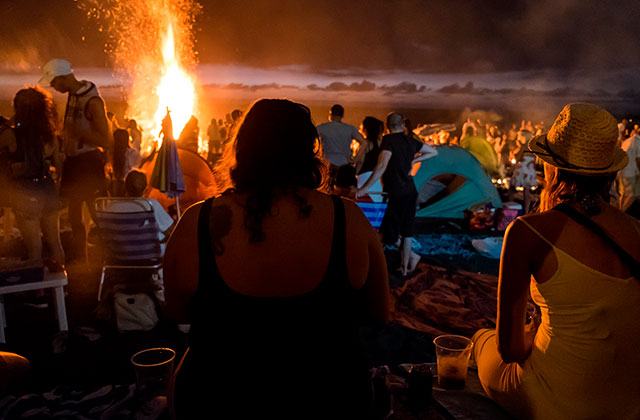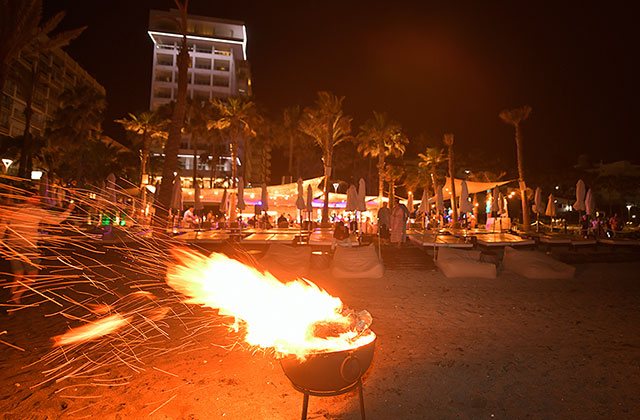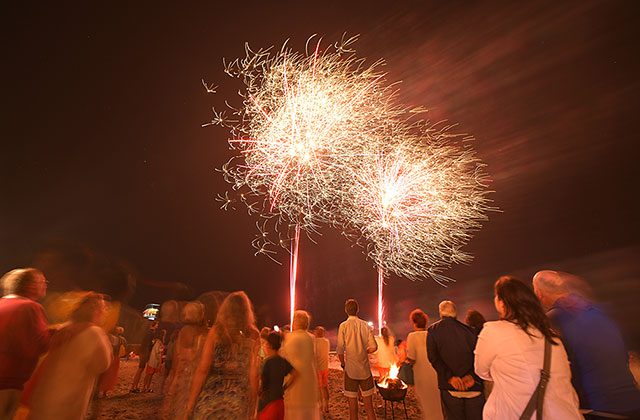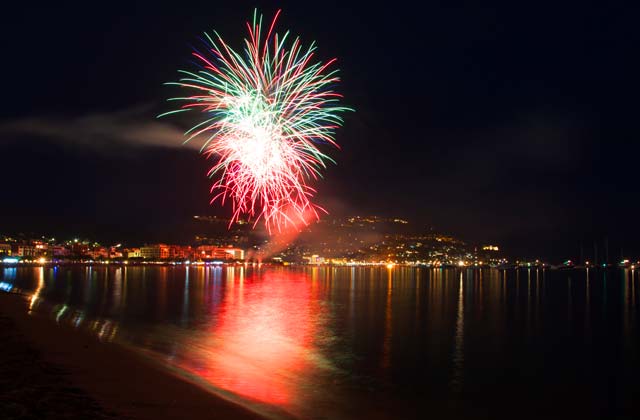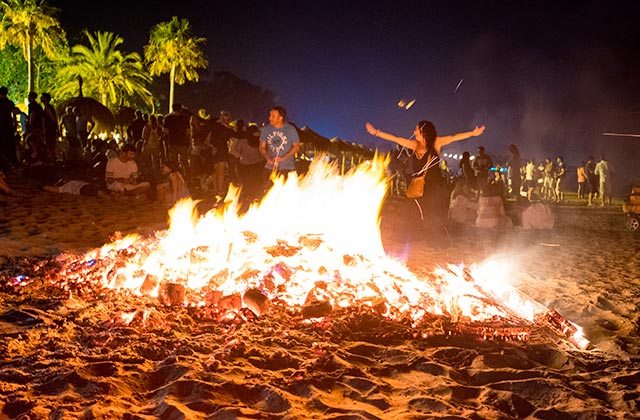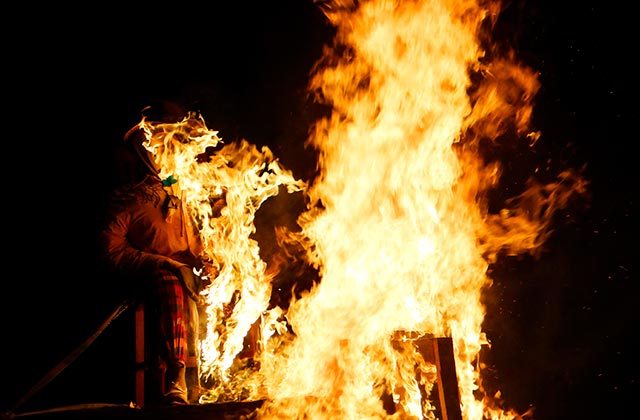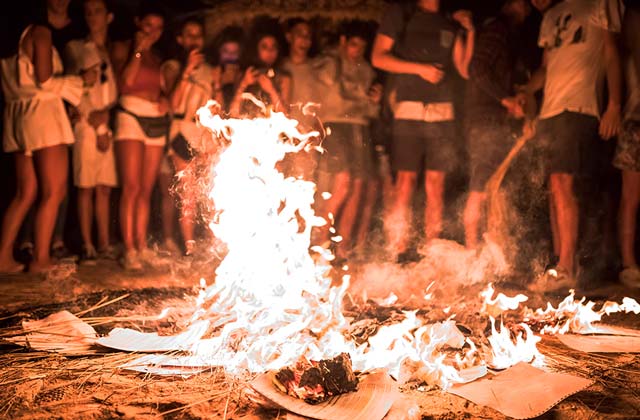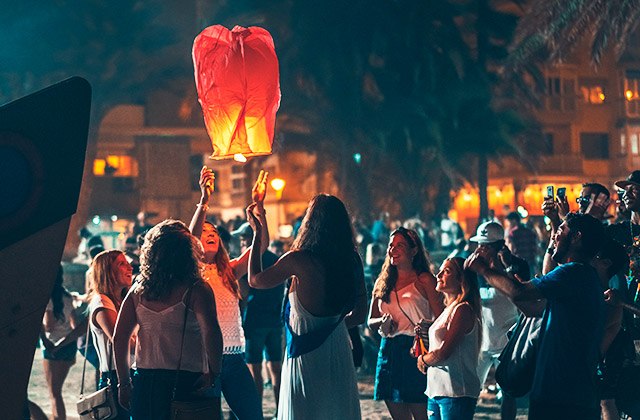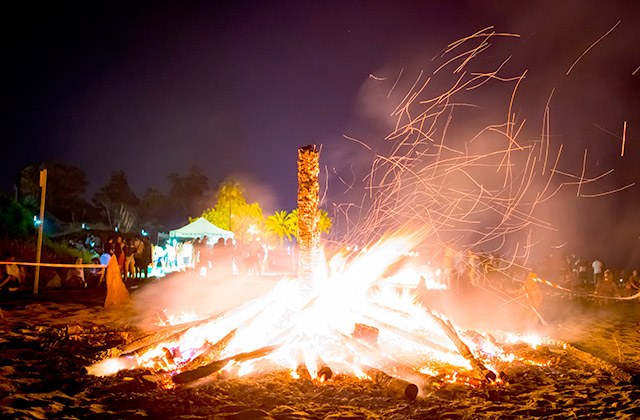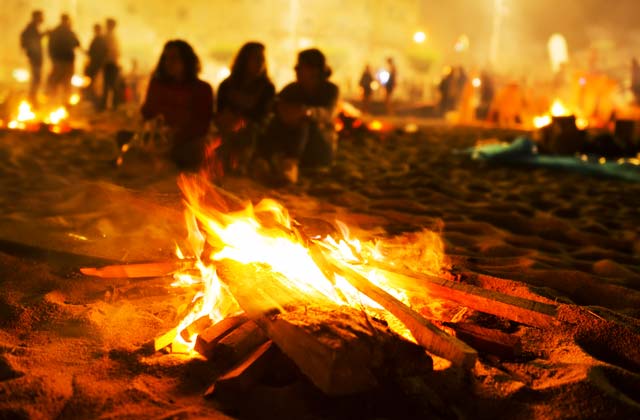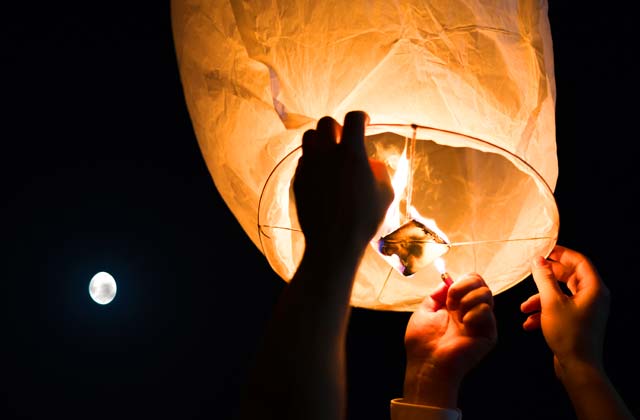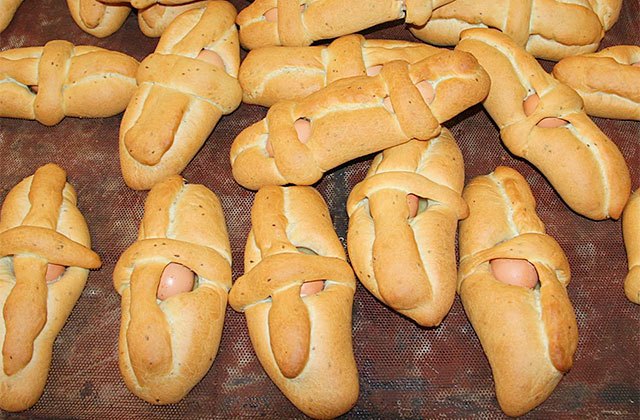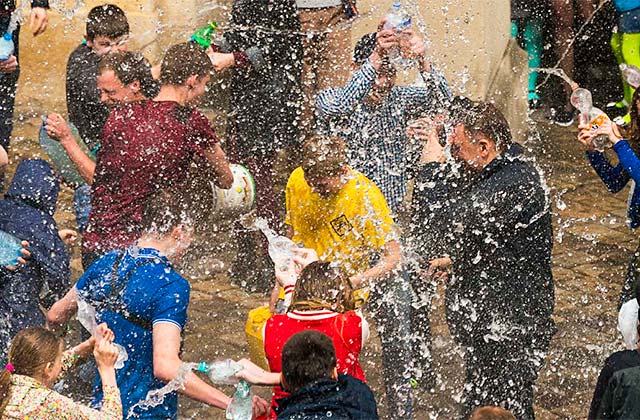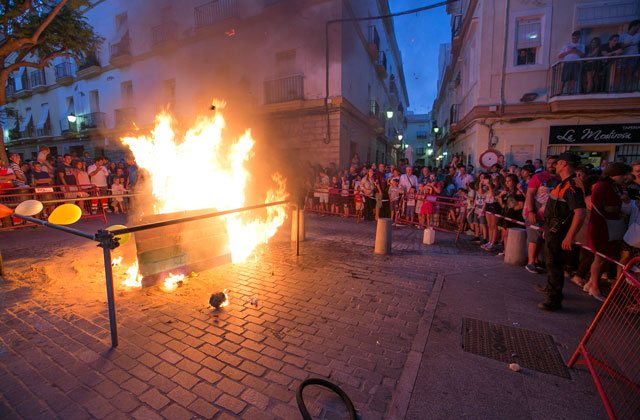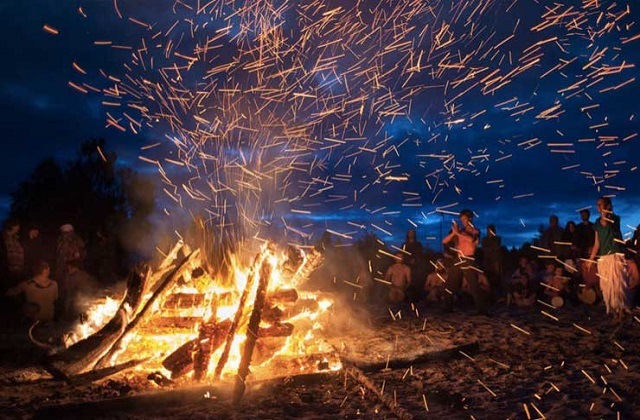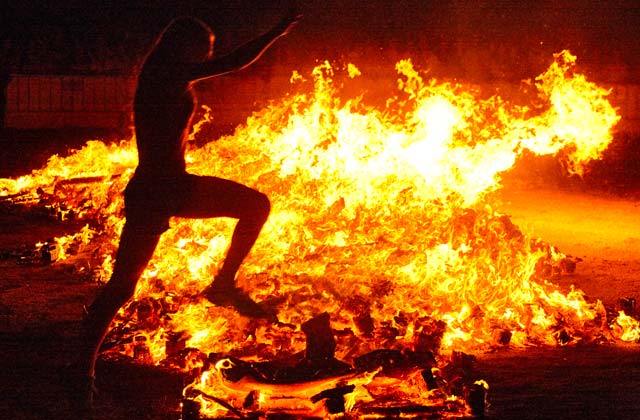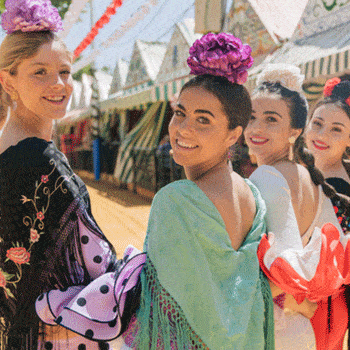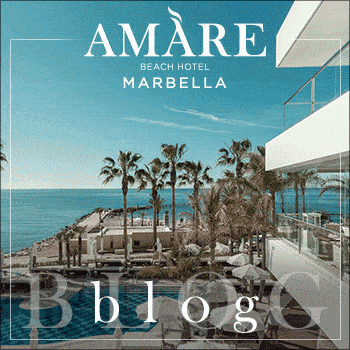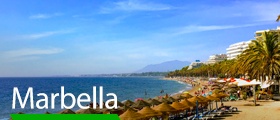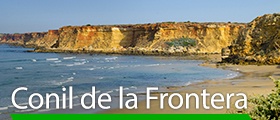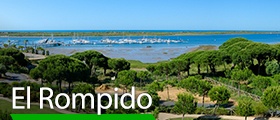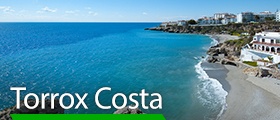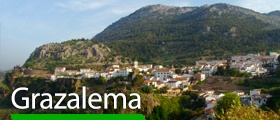
NOCHE DE SAN JUAN (SAINT JOHN’S EVE) IN ANDALUCIA
San Juan is the festival that marks the beginning of summer and is a festivity that is celebrated around the world, although in Andalucia it has a special importance in coastal areas. The festival of San Juan is for many people another event to enjoy with family and friends. For others, a magical moment in which the most important thing is to comply with all the traditional rituals of the party. There are also those that combine fun with superstition. On the night of San Juan it begins again; it’s a party of changes and restarts. Those who live the night of San Juan in Andalusia having fun and performing the rituals that promise a series of good omens.
Curiosities about the Night of San Juan
- Ancestral origin: The Night of San Juan has its roots in ancient pagan celebrations, such as the summer solstice, which were held to worship the sun and the fertility of the earth. With the arrival of Christianity, the festivity merged with the celebration of the birth of St. John the Baptist on June 24th.
- Bonfires and purification rituals: One of the most emblematic elements of the Night of San Juan are the bonfires. They are lit on beaches, squares, and fields, and people jump over them as a purification ritual and to ward off evil spirits. It is also customary to write wishes for the new cycle on paper and burn them in the bonfire.
- Midnight baths: Another common ritual on the Night of San Juan is bathing in the sea at midnight. It is believed that immersing oneself in the water at this moment brings good luck and keeps diseases away. Many people believe that if you bathe at midnight on San Juan’s Night and jump over the waves seven times, you will be protected throughout the year.
- Celebrations worldwide: Although the Night of San Juan has a strong presence in Spain, especially in the regions of Andalusia, Galicia, Catalonia, and Valencia, it is also celebrated in other parts of the world. In countries like Brazil (Fiesta Junina), Portugal (Festas dos Santos Populares), and Sweden (Midsommar), similar festivities with bonfires, dances, and traditional food take place.
- Mystical element and superstitions: The Night of San Juan is surrounded by beliefs and superstitions. It is said to be a magical moment when wishes come true. Additionally, it is believed that herbs collected during this night have healing and protective powers. It is also claimed that if you jump over the waves backwards at midnight, you will attract true love.
- Festivals and shows: During the Night of San Juan, many cities and towns organize festivals and shows to celebrate the occasion. These events often include live music, fireworks, parades, and cultural activities that attract both locals and tourists alike.
- Gastronomic importance: Gastronomy plays a prominent role on the Night of San Juan. In Spain, typical dishes such as “coca de San Juan” (a kind of cake decorated with candied fruits), grilled sardines (a symbol of the festivity), and “torrijas” (traditional sweet bread) are prepared. Additionally, it is common to enjoy an outdoor dinner with friends and family.
Saint John’s Eve: a pagan holiday turned into a Christian one
The origins of Saint John’s Eve come from a pagan holiday that celebrated the beginning of the summer in the Northern hemisphere. The symbolic purpose of the main ritual, the bonfires, was to give strength to the Sun. From the summer solstice on, the king of the sky starts to “weaken”; the days seem to be increasingly shorter.
As a Christian holiday, Saint John’s Eve serves to celebrate the nativity of Saint John. Thus, the purpose of the bonfires is to announce Saint John’s birth.
Nowadays, Saint John’s Eve is a holiday to celebrate the start of the summer, the warm weather and the vacations.
Elements and rituals of Saint John’s Festival
Fire and water are the basic elements of Saint John’s Festival. These elements are the basis of a series of rituals the purpose of which is to break curses and bring good luck, health, beauty and fertility, among other things.
Fire from the bonfires are the key elements of Saint John’s Eve. It gives strength to the Sun, announces the birth of a saint, and it symbolizes purification.
With fire, we get rid of bad luck; by burning old furniture and everything we want to leave behind. Leaping across the bonfires or burning in them papers in which we have written the things we want to eliminate from our lives is another od the rituals of the festival. According to the legend, the ashes from the bonfires have the power to cure diseases.
In the Christian version of this celebration, purification by fire could be related to forgiveness of the original sin through the Sacrament of Baptism established by Saint John.
Purification of sins is also related to another typical ritual of the celebration of Saint John’s Eve in Andalusia. In this case, the purifying element is the water; element that Saint John uses in Baptism.
In the pagan version of Saint John’s Eve, water purifies and rids people of bad things and helps good wishes come true. The popular believe is that after midnight water becomes miraculous, cures diseases and it is source of beauty, happiness, and fertility. These believes give place to the rituals of face washing or showering after midnight.
In some cities and towns of Spain, herbs are another element of Saint John’s Eve. It is believed that thyme, rosemary, and St John’s wort, among others, during Saint John’s Eve, have a better healing power. Therefore, it is customary in some places to go picking these herbs after midnight, in the countryside. There is also the tradition of hanging those herbs in the windows of the houses, to receive Saint John’s blessing.
WHERE TO CELEBRATE IT
La Misericordia or La Malagueta
San Juan is the shortest night of the year and how could it be otherwise, the best way to start the summer in Malaga is going to either La Misericordia or La Malagueta. In San Juan, on these beaches, it is typical to prepare a “moraga” with sardines, write a wish on a piece of paper and throw it into the fire to make it come true. In the same way it is very typical in this area the burning of the Júas that the way to scare the evil. In addition, in the Malagueta perform a spectacular pyrotechnic representation that you should not miss.
Torremolinos
On the beaches of Torremolinos, especially in Carihuela and Bajondillo, families and friends gather to jump over the moragas and bathe at midnight in the sea. It is also traditional to leave water “al fresco” full of flowers and wash your face in the morning to preserve the eternal beauty. In addition, in this town you can enjoy concerts and different performances to liven up the party.
Chiclana de la Frontera
In La Barrosa Beach, a multitude of visitors set the scene of bonfires. Here, as in other parts of Andalusia, it is traditional for neighbours and associations to make dolls that represent the most particular events and then be burned.
Almuñécar
Camping on the beach the night of San Juan is allowed if you go to Almuñécar to celebrate around the bonfires. The most special moment is at twelve o’clock at night, a magical moment to bathe in the light of the fire allowing you to reconcile with the evil spirits or to simply celebrate with friends to put an end to all the evils of the year.
Huelva
As every year, from June 23rd to 24th, the whole coast celebrates the night of San Juan. In Huelva, most of the towns bathed by the sea prepare hundreds of bonfires on their beaches to welcome the summer. Some municipalities will have up to 6 of these controlled fires, as in the case of Punta Umbría, whose beach areas of Altair, La Bota, Puntamar, Cazorla chiringuito, Albergue and the snack bar Los Negritos de El Portil will have their corresponding fires.
Baza
If you want to experience a different San Juan, what you should do is go to the Baza River and ask for one of the oldest legends of Andalusia, the Legend of the Enchanted. This legend tells that at some point in this magical night a beautiful woman with long hair will approach you with a comb and a weapon and ask you, “the dagger, the comb or the lady?” You must choose your answer!!!
Unique elements of Saint John’s Eve in Andalusia
In some places of Andalusia, Saint John’s Eve celebration has its own peculiarities; little or big details that give this celebration its unique characteristics.
In the municipality of Almuñécar, on the Costa Tropical, the city council gives out, amongst the attendants to the bonfires, traditional bollos de aceite con huevos cocidos (oil buns with hard-boiled eggs) and sky lanterns to make wishes. In this Andalusian municipality, as in many others, people continue with the ritual of face washing or showering after midnight.
In the municipality of Lanjarón, Granada, the Water Run (Carrera del Agua) is the singularity of this celebration. Locals and visitors of the municipality run the streets of the town between 12 and 1 a.m.; getting wet by water buckets, hoses, water balloons, water guns, etc.
The unique element of Saint John’s Eve in lots of municipalities in Cádiz is to burn in the bonfire the so-called “Juanillos”. These are rag dolls, or dolls of other materials, made for the occasion. In some municipalities, there are contests to choose the best doll and the best bonfire.
In Malaga, these dolls are called “Júas”. Sometimes, these dolls represent a public figure famous for his/her participation in an especially relevant event during the year.
Tips and Suggestions for Celebrating Saint John’s Eve Safely
- Safe Location: Choose a suitable and authorised place to light bonfires. Avoid areas with dry vegetation or near buildings.
- Permits: Check if you need permits to light a bonfire in your area and ensure you comply with local regulations.
- Distance: Maintain a safe distance between the bonfire and people, houses, trees, and any flammable materials. Never use flammable liquids to start the bonfire.
- Suitable Materials: Use only dry wood and other safe materials for burning. Avoid burning plastics, metals, or chemicals that may emit toxic gases. Never throw barrels or aerosol cans into the fire, as they contain gases that can explode.
- Extinguishers and Water: Keep fire extinguishers, buckets of water, or a hose handy to put out the bonfire in case of an emergency.
- Fire Control: Never leave the bonfire unattended. Ensure someone is always watching the fire.
- Wind: Take weather conditions into account. If it’s very windy, it’s better not to light a bonfire as sparks can fly and cause fires.
- Appropriate Clothing: Wear fitted clothing and avoid synthetic materials that can easily catch fire. It is preferable to wear cotton clothing.
- Alcohol and Fire: If you consume alcohol, do so in moderation and maintain a responsible attitude, especially near the fire.
- First Aid: Keep a first aid kit on hand for minor burns or other accidents. If someone gets burned, it is advisable to apply cool water to the affected area. Do not apply ointments, creams, or any other disinfectants, and do not remove any clothing that may have adhered to the skin. And remember, for any emergency, call 112.
- Children’s Safety: Constantly supervise children and ensure they keep a safe distance from the bonfire.
- Complete Extinguishment: Ensure the bonfire is completely extinguished before leaving the area. Use water or sand to make sure no embers are left burning.
The festivals you can’t miss in Andalucia
What are the best beaches in Andalucia?
WHERE TO STAY
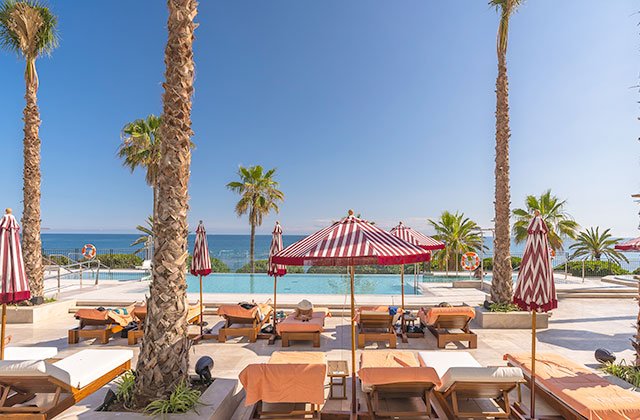
El Fuerte Marbella
If you wish to discover this unusual side of Andalucía, don’t hesitate to stay at the best hotels. Without a doubt, the best option is Fuerte Hoteles. The chain has facilities where, apart from the regular services, you can enjoy the best of each spot in the Andalusian geography. Its over 60 years’ experience is the best warranty so you can devote your time to discovering these unusual corners. Marbella, Conil, Grazalema, El Rompido or Torrox are some of the places where you can find amazing accommodation facilities near the spots we have recommended for you.
